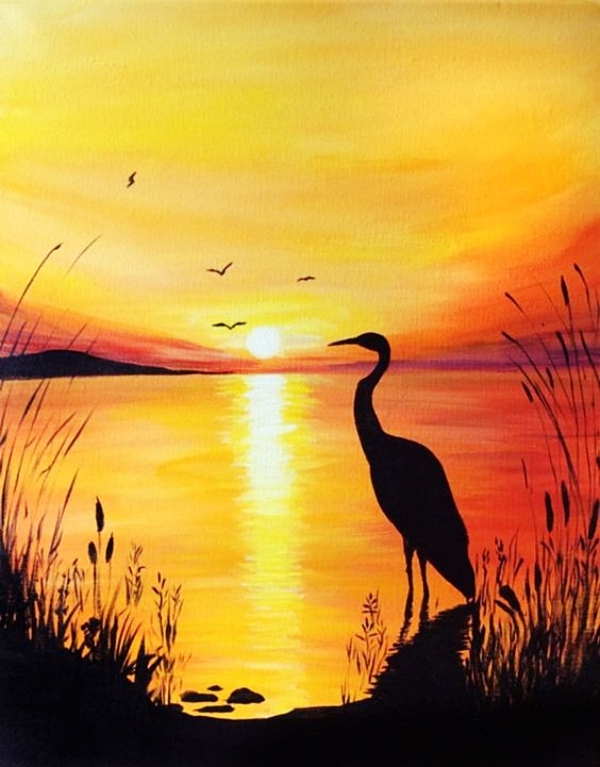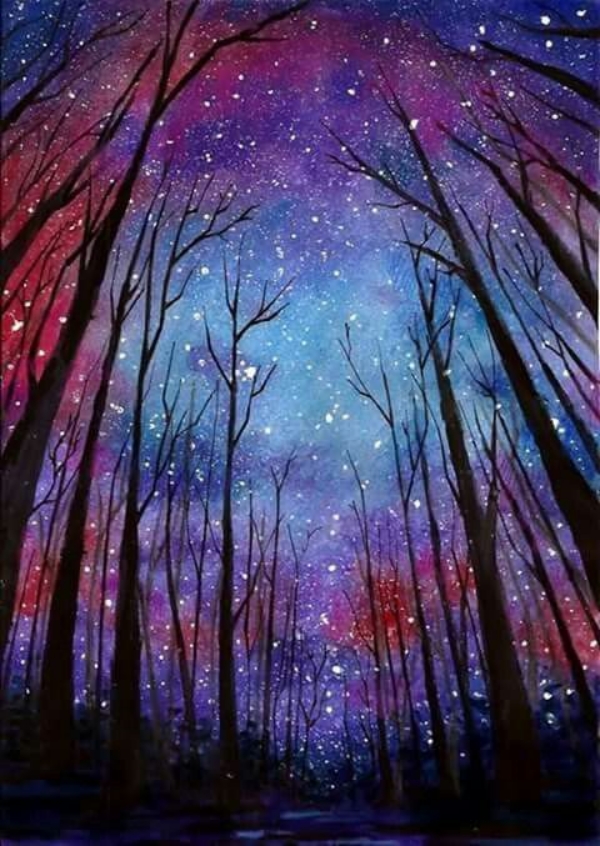

I love how she uses different blending techniques and tools to achieve fun textures, lines, and shapes. Beautiful abstract acrylic painting tutorial Grab a black canvas and white paint and start painting! Photo credit Love Create Celebrate 4. This artwork looks fantastic! The best part, anyone can do it, the materials you need are minimal, and you can finish it in a couple of minutes.

Watch this tutorial by Love Create Celebrate if you want a fast and easy canvas painting. This beautiful large canvas painting by A Beautiful Mess is the perfect example of using bold colors that turns a simple piece into something fantastic. The palette is gorgeous, and you can create this fantastic art in a couple of hours max with a large flat brush.

I love this canvas painting by Sarah Hearts. This type of art suits all skill levels, however, learning different techniques can take your art to the next level.
SIMPLE SCENERY PAINTINGS ACRYLIC SOFTWARE
If unsure about the colors, use online color-picking software or hop into Colorpalettes and choose an image you like. but they look the best with high contrast, bold accents, or a metallic touch. They are the easiest to do, they are a lot of fun, and you can experiment with the brush and other tools. If you are a beginner, I suggest you try abstract paintings first. Final thoughts about the easy acrylic painting ideasĭISCLOSURE: THIS POST MAY CONTAIN AFFILIATE LINKS, MEANING I GET A COMMISSION IF YOU DECIDE TO MAKE A PURCHASE THROUGH MY LINKS, AT NO COST TO YOU.Fantastic canvas painting tutorials for beginners.Again, we’re using loose brush strokes and a brush with a rounded tip.įor the forests, we’ve mixed sap green with ultramarine blue to make a rich dark green. We’ve continued to use cobalt blue, black and titanium white paints for the mountains, but we’ve also introduced some ultramarine blue for the darker areas of the slopes. Work using the wet on wet technique to mix paint colours together before they’ve had a chance to dry. Add this using a light wash and repeat if you want to darken the colour. You’ll also notice there’s a hint of blue-green on the slopes of the mountains. Next, add darker greens for the forests on the mountainside. Mix light and dark shades of blue and use a finer brush to add detail to the mountains. While all of the mountains have a bluish tone, the more distant range is definitely a deeper shade of blue. Look at the source image and you’ll notice that there’s a real difference between the mountains that are close to the viewer and the ones that are further away. Washes are handy for making very subtle changes to your painting. Top tip: you can add a tint to the clouds and even out their appearance by applying a very thin wash of colour over the whole sky. You may want to return to the clouds later to refine the details or tidy up the skyline, so don’t worry if it doesn’t look perfect at this stage. Here we’ve used both wet on wet (painting on top of wet paint) and wet on dry (painting over dry paint) to create the cloudy look. It’s okay to go back over the clouds a few times to get the effect you want. The rough surface of the canvas will pick up the paint. If you want to add texture to your clouds, wait for the first layers to dry then drag thick paint over the canvas with a dry brush. Blend colours together while they are wet for a smooth gradient. Start by applying the darkest colours, then gradually work towards the lighter ones.

For example, we can see that there’s white, light grey and a stormy blue-grey. Painting clouds is a real skill, but it’s worth taking the time to learn.įor these clouds, we’ve started by mixing a few different colours. The source photo we’ve chosen has lots of billowing clouds. We’re going for a more abstract and impressionistic approach with this painting, so don’t worry too much about the colours being too bright. The grass is a mix of titanium white, sap green and yellow ochre. The mountains that are closer to us are a mix of titanium white, cerulean blue, cobalt blue and black. We’ve used a rounded brush to get soft edges and dabbed the brush to start getting the effect of a cloudy sky.įor the mountains, we blended white with cobalt blue and ultramarine violet for the range that’s further away. Here, we’ve used titanium white with a little cerulean blue and a little black for the sky. If you make any errors, remember that you can easily correct them by simply painting over the top when the paint is dry. It won’t look the best at this stage, but trust the process and keep going. Mix those main colours and block out large sections of your painting. What’s the main colour in each section? Ignore the highlights and shadows at this stage, you’re just looking for the shade that you can see the most of. Take a moment to have a look at your source photo.


 0 kommentar(er)
0 kommentar(er)
